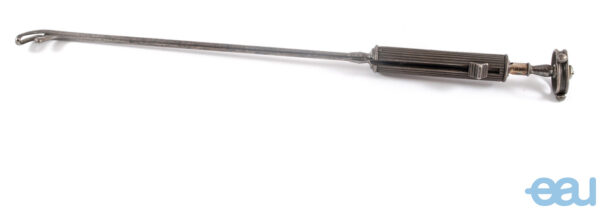Exhibit of the Month: The Weiss Lithotriptor
This particular lithotrite is from the late nineteenth century and was made by the famous instrument makers John Weiss & sons Ltd. Weiss.
Every month, an EAU History Office member chooses an item of particular interest from the European Museum of Urology. This instrument was chosen by Mr Jonathan Goddard, Consultant Urological Surgeon from the UK and curator of the Museum of Urology at the British Association of Urological Surgeons.
I have chosen this object from the EAU European Museum of Urology because of its association with a famous Victorian urologist, Sir Henry Thompson. The lithotriptor (or lithotrite) was passed blindly into the bladder to feel for, grasp and crush bladder stones. In this modern world of high definition endoscopy this may seem archaic but in the Nineteenth Century, it was cutting edge technology.
The first usable lithotrite was introduced by Jean Civiale of Paris in 1823. This model, with its wheel-like grip and sliding locking nut was designed by Sir Henry Thompson of London. Thompson had learned the technique from Civiale and famously used a lithotrite to crush the bladder stone of King Leopold I of Belgium in 1863. He subsequently also crushed the bladder stone of Napoleon III, who sadly did not survive.
This particular lithotrite is from the late nineteenth century and was made by the famous instrument makers John Weiss & sons Ltd. Weiss, originally from Silesia, moved to London and established his business in 1787. He became a British citizen in 1826.
The blind lithotrite was a pioneering example of early minimally invasive surgery. Thompson’s fame helped promote its use in Great Britain; he is thought of as the first British Urologist. Find out more about the history of lithotripsy in the European Museum of Urology.



